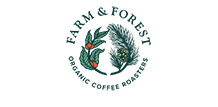Nature Conservancy of Canada offers tips on wildlife interactions
Coyote, other wildlife sightings and encounters frequent this time of year
Early spring draws out animals who may have spent the winter lying low to conserve energy. Now, as snow melts and reveals more food sources, these creatures take the opportunity to find food and spring homes, wherever they can. That’s why it seems many people seem to see and hear more wildlife in their neighbourhoods this time of year. Samantha Knight is national conservation science manager with the Nature Conservancy of Canada (NCC). Knight feels it is a good sign that people are becoming more aware of wildlife and their annual life cycles.
“Wildlife is making a comeback in many of our cities," said Knight. "For example, coyotes have expanded their range and even adapted to live in the downtown cores of our cities. But we need to remember that these are wild animals and need to be treated with respect so we can peacefully co-exist.”
Knight says coyotes are generally active in winter during their mating season. Spring is when they are searching for dens to rear their pups. She reminds people that coyotes, as with all wildlife, should only be watched from a distance and never approached. While coyotes are generally shy and would prefer to avoid confrontations with humans, they can become habituated to people and become aggressive.
“Early spring is when coyotes are very actively looking for food. They play an important role in the urban ecosystem by controlling rodent populations and eating carrion. But unfortunately coyotes that are injured, starving, young or have been fed by humans can come into conflict with people,” said Knight.
Knight offers the following tips to people to keep themselves, and their pets, safe:
- Feed your pets inside and keep them indoors. Do not leave pets unattended or unprotected outdoors. Keep dogs on a leash when going for walks.
- Make sure garbage, pet food or compost is not left outside. Keep garbage containers sealed and locked. Close off spaces under porches, decks and sheds to prevent wildlife from seeking shelter or dens.
She also shares good information for people going out into nature and who may encounter a coyote or any wildlife:
- Do not approach, do not try to feed, touch, or to photograph the animal from close distances.
- If you encounter a coyote and it does not flee, remain calm and slowly back away and leave the area in the direction where you came from. Never run from a coyote, or any wildlife, as it may trigger a predatory response and give chase.
- Use personal alarm devices — such as a whistle, bell or phone — to frighten or threaten the animal.
- If the animal exhibits aggressive behaviour, then make yourself larger and noisier by raising your arms and voice.
- If, in the rare case, the animal continues to approach, throw rocks or sticks in its direction.
Landowners unable to deal with coyotes that repeatedly show signs of aggression or habituation should contact the police or their local Natural Resources Department.
About
The Nature Conservancy of Canada (NCC) is the country’s unifying force for nature. NCC seeks solutions to the twin crises of rapid biodiversity loss and climate change through large-scale, permanent land conservation. As a trusted partner, NCC works with people, communities, businesses and government to protect and care for our country’s most important natural areas. Since 1962, NCC has brought Canadians together to help conserve and restore more than 15 million hectares, including nearly 50,000 hectares in Quebec.
NCC is a registered charity. With nature, we build a thriving world.
To learn more, visit natureconservancy.ca.
Learn More
Follow us on on X (formerly Twitter): x.com/NCC_CNC | x.com/NCC_CNCMedia
Find us on Facebook
- 30 -




